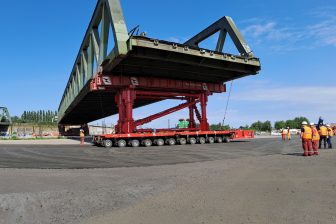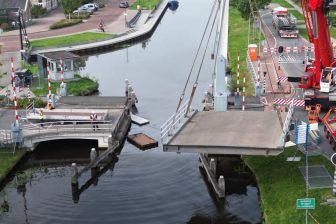Guidelines transport Europe and neighbouring regions
IP/07/119
Strengthening transport cooperation with neighbouring countries
Brussels, Belgium – The European Commission 2007-01-31 adopted a Communication on "Guidelines for transport in Europe and neighbouring regions". It outlines an ambitious policy in view of creating an effective transport market involving the EU and its neighbours and of spreading the principles of internal market. The Communication identifies the five most important transport axes for international trade between the Union and the neighbouring countries and beyond. It also puts forward a package of measures to shorten journey times along these axes including improvement of infrastructure, streamlining of customs procedures and reducing administrative obstacles.
In order to make this policy a reality and boost cooperation between the European Union and the neighbouring regions, the Commission will launch exploratory talks with all the countries concerned. "By putting forward an ambitious yet feasible set of measures for the transport sector, the Guidelines contribute to better integrating the economies and transport systems the EU and its neighbours but also to fostering regional cooperation between the neighbouring countries themselves", said Vice-President Jacques Barrot, Commissioner for Transport. "I would particularly like to pay homage to Loyola de Palacio, departed from us too soon, whose dedication to the transeuropean transport network has today been concretised" declared Vice-President Jacques Barrot.
The extension of networks to neighbouring countries is one of the objectives set out in the recent Communication on the ‘Strengthening of the European Neighbourhood Policy’[1]. “Improving our transport links with our neighbours will not only mean closer relations with them but it will also generate more trade and tourism. The proposed Neighbourhood Investment Fund will be a perfect mechanism to encourage investment in the transport sector and, therefore, to support the actions included in these guidelines”, underlined Benita Ferrero-Waldner, Commissioner for External Relation and European Neighbourhood Policy. Additional funding can also come from the new increased EIB external lending mandate for the neighbourhood.
"The extension of the trans-European Networks to the Balkans and Turkey will give a new impetus for economic development in the region. The prospect of improved infrastructure, simplified procedures and plans to cut the red tape promote trade and business contacts and closer integration to Europe" said Olli Rehn, Commissioner for Enlargement.
The Guidelines outline the first steps of a comprehensive policy for closer integration of the EU transport system with neighbouring countries. This policy focuses on the main infrastructure for international transport[2] and the legislation governing the use of these routes by different transport modes. Over time, it should lead to common rules and regulations for the transport sector as a whole and thus create an effective transport market involving the EU and its neighbours.
These Guidelines build on the recommendations of the High Level Group the Commission set up in 2004 and which submitted its final report to Vice-President Barrot in December 2005. The Group was chaired by the former Vice-President of the Commission, Loyola de Palacio. It included high level representatives from the EU27 and from the 26 neighbouring countries in the North, East and South-East of Europe as well as from countries around the Mediterranean and the Black Sea. Three main international financial institutions also participated in this work[3].
[1] COM (2006) 726 final.
[2] The five transnational axes identified are:
- Motorways of the Seas: to link the Baltic, Barents, Atlantic (including Outermost Regions of Canary Islands, Azores and Madeira), Mediterranean, Black and the Caspian Sea areas as well as the littoral countries within the sea areas and with an extension through the Suez Canal towards the Red Sea;
- Northern axis: to connect the northern EU with Norway to the north and with Belarus and Russia to the east. A connection to the Barents region linking Norway through Sweden and Finland with Russia is also foreseen;
- Central axis: to link the centre of the EU to Ukraine and the Black Sea and through an inland waterway connection to the Caspian Sea. A direct connection from Ukraine to the Trans-Siberian railway and a link from the Don/Volga inland waterway to the Baltic Sea are also included;
- South Eastern axis: to link the EU with the Balkans and Turkey and further with the Southern Caucasus and the Caspian Sea as well as with the Middle East up to Egypt and the Red Sea;
- South Western axis: to connect the south-western EU with Switzerland and Morocco, including the trans-Maghrebin link connecting Morocco, Algeria and Tunisia and its extension to Egypt.
[3] The European Investment Bank, the European Bank for Reconstruction and Development and the World Bank.
Additional background information (provided by Infrasite’s Editorial Staff)
Information about TEN-T Priority Axis projects
U las zojuist één van de gratis premium artikelen
Onbeperkt lezen? Profiteer nu van de introductieaanbieding voor € 10,- per maand.
Bent u al abonnee?



